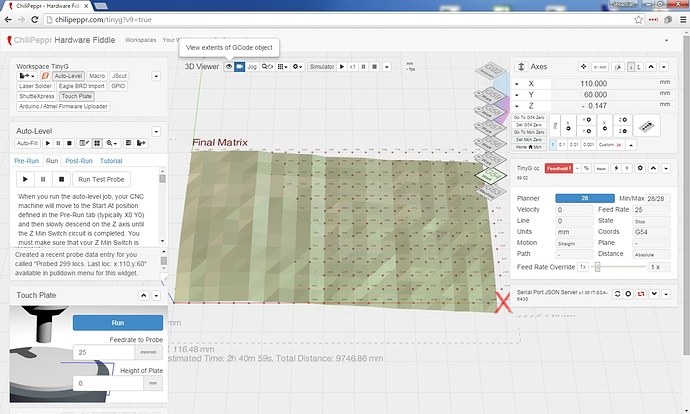TinyG2 first time successful probing
Finally a board with 299 points probed successfully.
That would not be possible without my friend, a real electronic expert, who shared his experience and gave me few hints today. Thank you, Peter.
I want to give my thankful words to the TinyG and Chilipeppr communities members who shared ideas and helped putting things on the right track. Thanks: @Alden_Hart , @Riley_Porter_ril3y , +Carl McGrath and @jlauer .
The keys to my existing configuration were:
- testing probing process with a push button simulating a probe while connected to the machine, so real hardware is moving - this was successful proving that software is working correctly
- replacing probe twisted wires with a shielded cable in order to minimize noise
- re-arranging wiring in a way that logic wires are separated from motor or any other high-noise wires. I really thought my wires were good enough, but placing them again, even slightly made a huge difference.
- I used 470 Ohms pull-up (between VCC and input pin) and 100nF capacitor (between input pin and GND), might be even better to use a bigger cap.
- My probing device is now a shielded cable having two alligator clips on the machine side and Dupont male connectors on the Arduino side:
- alligator clip connected to PCB is wired to the Probe pin
- alligator clip connected to v-bit is wired to GND
- Machine frame has been disconnected from Earth wire.
- Additionally I isolated the spindle (400 Watts Chinese Quiet Spindle from eBay) from the machine frame by wrapping a yellow painter tape around the spindle.
- The v-bit is placed directly in the collet with no isolation.
Still need to do more boards probed in order to make sure process is repeatable but this is great to have it working the first time.
